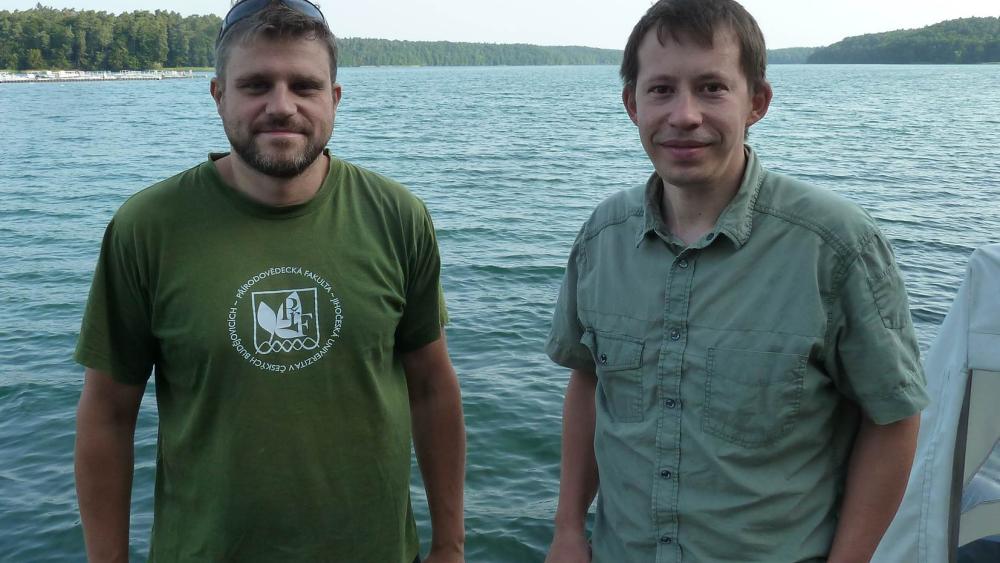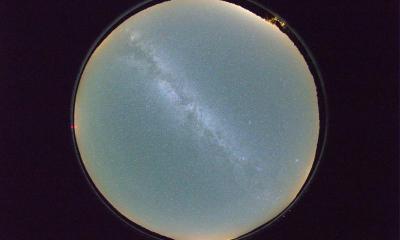
Milan Riha (left) and Jan Hlavac (right), two fish experts from the Biology Centre of the Czech Academy of Sciences, have come over from the Bohemian town of Budweis to help with the stocking. It is important to carefully handle the fish, which were weighed and measured before their introduction. | Photo: Martina Bauchrowitz
At the center of this year's LakeLab experiment is the migratory behavior of zooplankton. While during the day they hide in the darkness of the deep water avoiding to be an easy prey for the fish, at night times they migrate up to the surface water in order to feed on algae. The question is whether the zooplankton adapts its migratory behavior to the altered light regime. Since the vertical migration is triggered not only by the day-night change, but also by chemical messengers, so-called kairomone, which are released by the zooplankton-eating fish, the stocking of the LakeLab enclosures with fish is a prerequisite for the experiment. For this reason, 5 small perch – that corresponds to the population density in Lake Stechlin – were today released into the 20 enclosures participating in the experiment.






